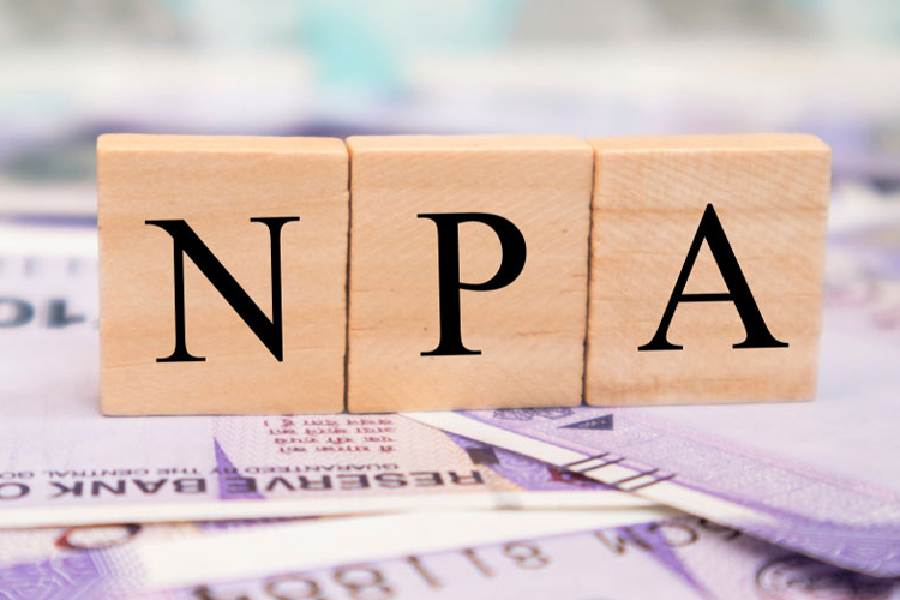Asset quality of the Indian banking system improved in 2022-23 — but that was propped up by write-offs, which jumped 21 per cent and brought down the value of non-performing assets (NPAs), according to the Reserve Bank of India (RBI).
In its report on the trend and progress of banking in 2022-23, the RBI said banks wrote off bad loans worth Rs 2.17 lakh crore in 2022-23 compared with Rs 1.79 lakh crore in the previous fiscal.
Public sector banks, like in the past, accounted for a large chunk of such loans. It stood at Rs 1.27 crore lakh crore in 2022-23 against Rs 1.19 lakh crore in 2021-22.
Recently, minister of state for finance Bhagwat Karad told the Rajya Sabha that banks have written off Rs 10.57 lakh crore in the last five fiscal years, of which Rs 5.52 lakh crore was accounted by large industries.
The RBI report said the improvement in asset quality of banks, measured by their GNPA (gross non-performing asset) ratios, began in 2018-19 and continued during 2022-23. It fell to a decadal low of 3.9 per cent at end-March 2023 and further softened to 3.2 per cent at end-September 2023.
In absolute terms, the gross NPAs of all banks stood at Rs 5.71 lakh crore in 2022-23 which was lower than Rs 7.43 lakh crore in the previous fiscal. Similarly, gross NPAs as a percentage of the gross loans declined to 3.9 per cent from 5.8 per cent.
The decline in the slippage ratio — which measures new accretions to NPAs as a share of standard advances — was another highlight of the report.
It came down to 1.8 per cent in March 2023 and further to 1.7 per cent in September from 2.1 per cent in 2021-22 and 2.8 per cent in 2020-21.
RBI said while retail and services sector loans drove credit growth, banks’ financial conditions improved as they posted higher net interest margins and profits.
The report said unsecured loans present a higher credit risk for banks. The share of such loans in the total credit of has been increasing since end-March 2015, reaching 25.5 per cent by end-March 2023 from 25 per cent a year ago.
More than 50 per cent of loans by foreign banks are unsecured, while the share is lower at 27.3 per cent for private sector banks and 22.6 per cent for PSU banks.
The number of frauds during the first half of the current financial year has increased substantially to 14,483 cases against 5,396 cases a year ago.
The value of frauds, however, fell to Rs 2,642 crore from Rs 17,685 crore a year ago.
G-Sec trades
The RBI on Wednesday issued guidelines for lending and borrowing in government securities.
G-Secs issued by the central government, excluding treasury bills, would be eligible for lending/borrowing under a Government Security Lending (GSL) transaction.
The securities obtained under a repo transaction, including through RBI’s Liquidity Adjustment Facility or borrowed under another GSL transaction would also be eligible to be lent under a GSL transaction, as per a notification. With inputs from Calcutta bureau











